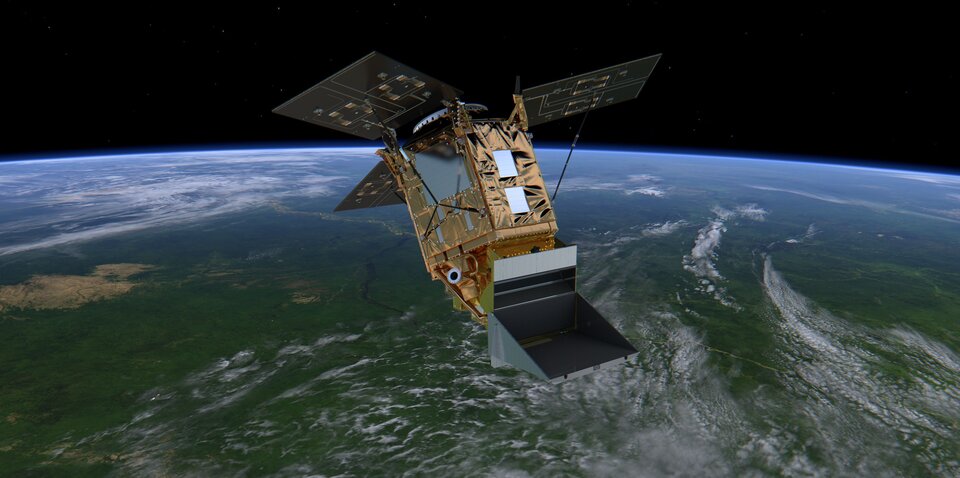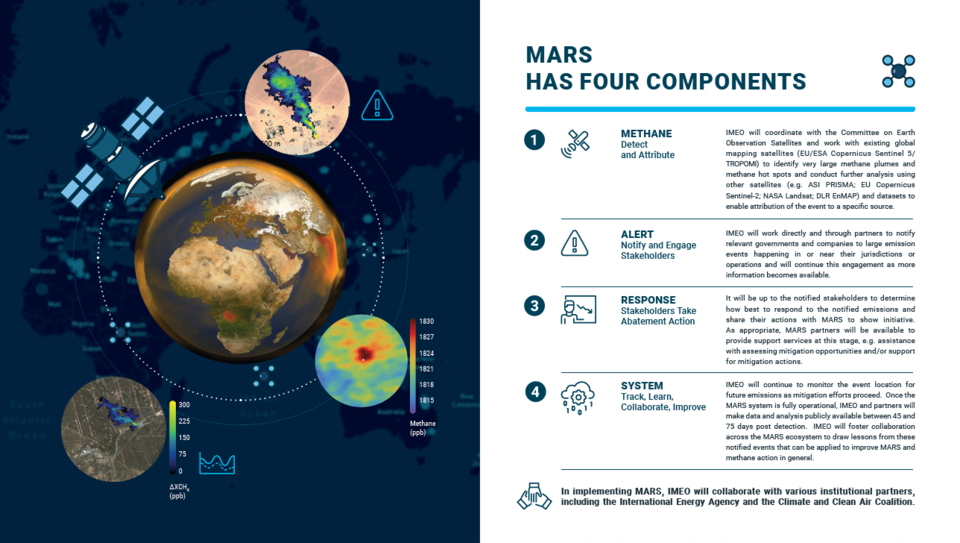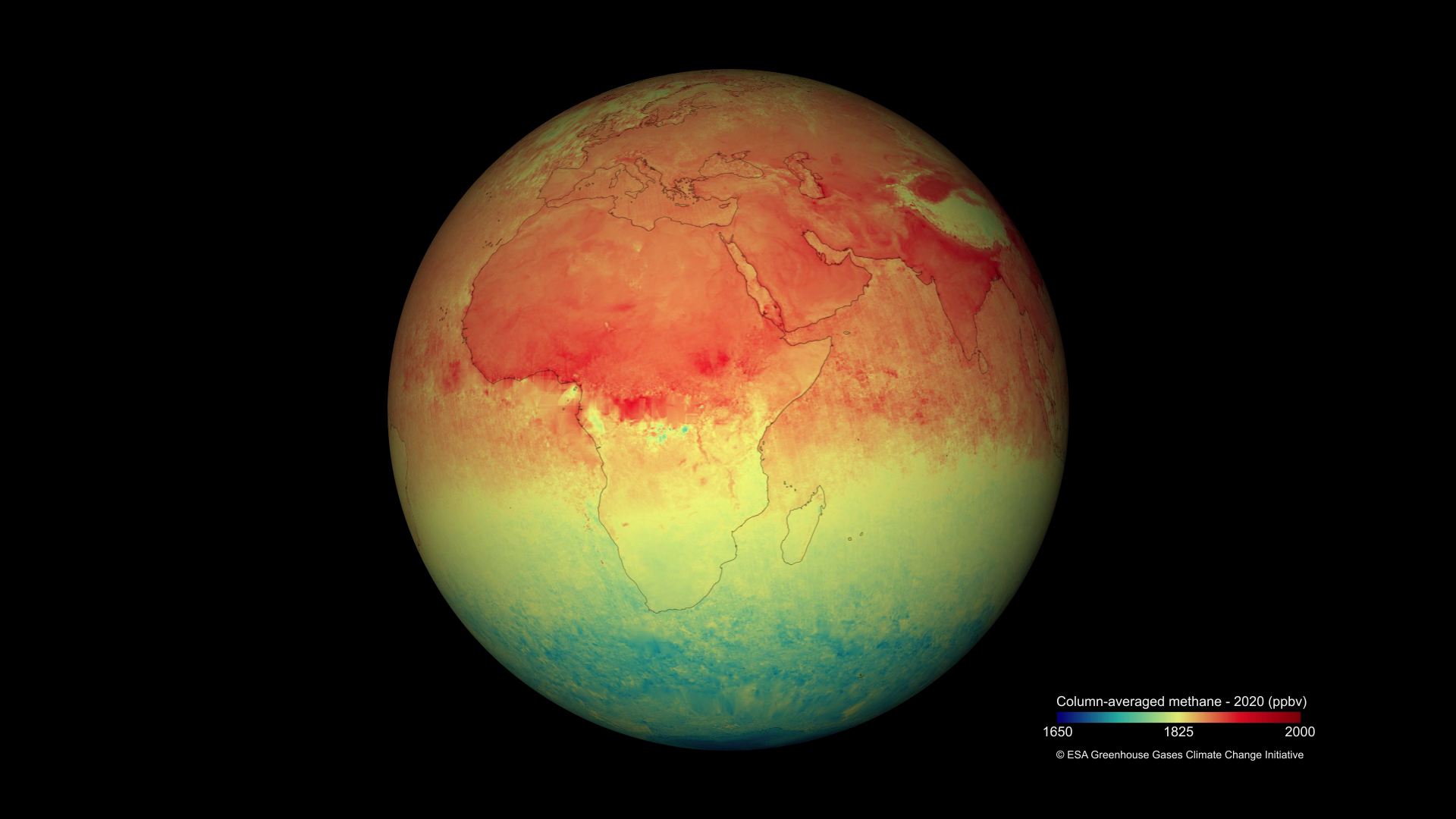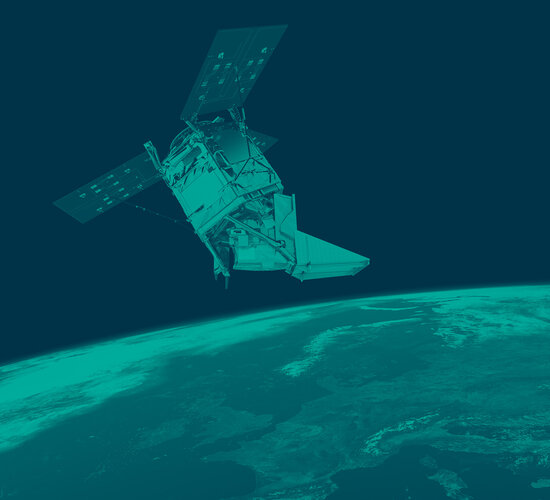Sentinel-5P data used in new methane detection system
As part of worldwide efforts to slow climate change, the United Nations has revealed a new satellite-based system to detect methane emissions. The Methane Alert and Response System (MARS) initiative, launched at COP27, will scale up global efforts to detect and act on major emissions sources and accelerate the implementation of the Global Methane Pledge.
The Sentinel-5P satellite, the first Copernicus mission dedicated to monitoring our atmosphere, will be crucial in implementing this ambitious initiative.
Methane is a powerful greenhouse gas and the second biggest driver of global warming. It effectively absorbs heat from the sun, more so than carbon dioxide, and contributes significantly to the warming of the atmosphere. As a result, there is a growing demand to track and regulate methane emissions.
According to the Intergovernmental Panel on Climate Change, we must cut methane emissions at least 30% by 2030 – the goal of the Global Methane Pledge – to keep the 1.5°C temperature limit within reach.
MARS is the first global system providing rapid, actionable and transparent data on methane emissions thanks to satellites. These data will be then made available to policymakers, businesses and the general public. Using state-of-the-art satellite data, including data from the Copernicus Sentinel-5P satellite, it will identify major methane emission events, notify relevant stakeholders, and support and track mitigation progress.

“Copernicus Sentinel-5P is currently the only satellite providing methane measurements daily and at a global scale. I am beyond thrilled to see Sentinel-5P data playing such a large role in the MARS initiative,” commented Claus Zehner, Copernicus Sentinel-5P, Altius and Flex Missions Manager at ESA.
Sentinel-5P carries the state-of-the-art Tropomi instrument which maps a multitude of trace gases. Aside from methane, these include nitrogen dioxide, ozone, formaldehyde, sulphur dioxide, carbon monoxide and aerosols – all of which affect the air we breathe and therefore our health, and our climate. With a swath width of 2600 km, the satellite maps the entire planet every day.
Manfredi Caltagirone, head of the UN Environmental Programme’s International Methane Emissions Observatory, added, “MARS will use Sentinel-5P daily to detect large methane plumes with low latency and, periodically, ‘hot-spots’ of enhanced methane concentrations. This global coverage from Sentinel-5P is critical to trigger analysis of higher-resolution data, such as those from Copernicus Sentinel-2, for the identification, quantification, attribution and tracking of active sources.”

He continues: “UNEP looks forward to strengthening the collaboration with ESA and other satellite operators to increase the availability of accurate, actionable data needed to accelerate transparent action on methane reductions in the short-term”.
Beginning with very large point sources from the energy sector, MARS will integrate data from the rapidly expanding system of methane-detecting satellites to include lower-emitting area sources and more frequent detection. Data on coal, waste, livestock and rice will be added gradually to MARS to support Global Methane Pledge implementation.
ESA’s Director of Earth Observation Programmes, Simonetta Cheli, added, “Reducing methane emissions will make a rapid difference in the fight against climate change. Accurate data that comes from satellites such as Copernicus Sentinel-5P will lead to targeted action and will help governments deliver on this important climate goal.
Ahead of ESA’s Council Meeting at Ministerial, we plan to grant continuity and enhance the use of Copernicus data with the Copernicus Space Component to meet new and growing user needs, as well as support decision-makers.”















 Germany
Germany
 Austria
Austria
 Belgium
Belgium
 Denmark
Denmark
 Spain
Spain
 Estonia
Estonia
 Finland
Finland
 France
France
 Greece
Greece
 Hungary
Hungary
 Ireland
Ireland
 Italy
Italy
 Luxembourg
Luxembourg
 Norway
Norway
 The Netherlands
The Netherlands
 Poland
Poland
 Portugal
Portugal
 Czechia
Czechia
 Romania
Romania
 United Kingdom
United Kingdom
 Slovenia
Slovenia
 Sweden
Sweden
 Switzerland
Switzerland


































